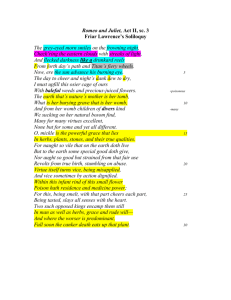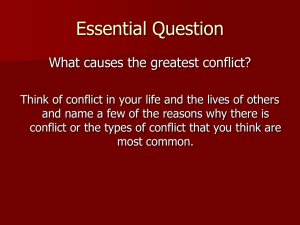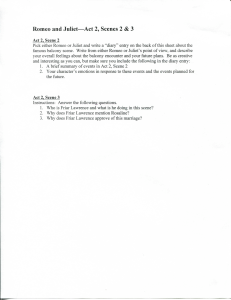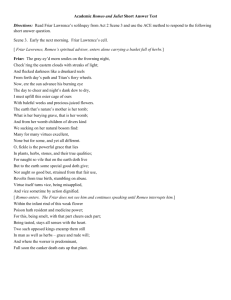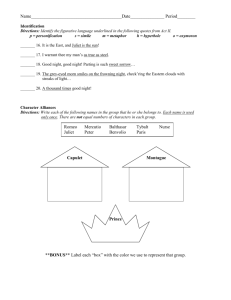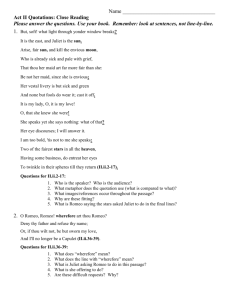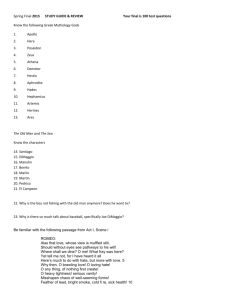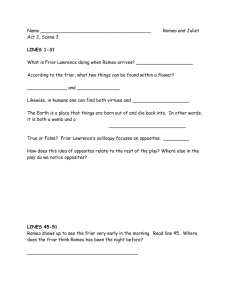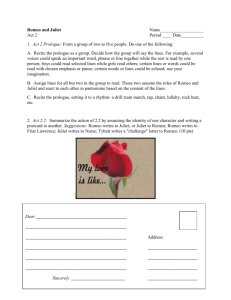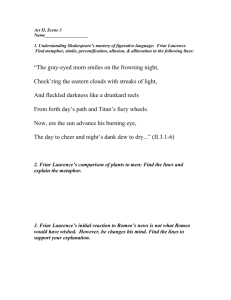Contrasts and opposites are at the centre of `Romeo and Juliet
advertisement
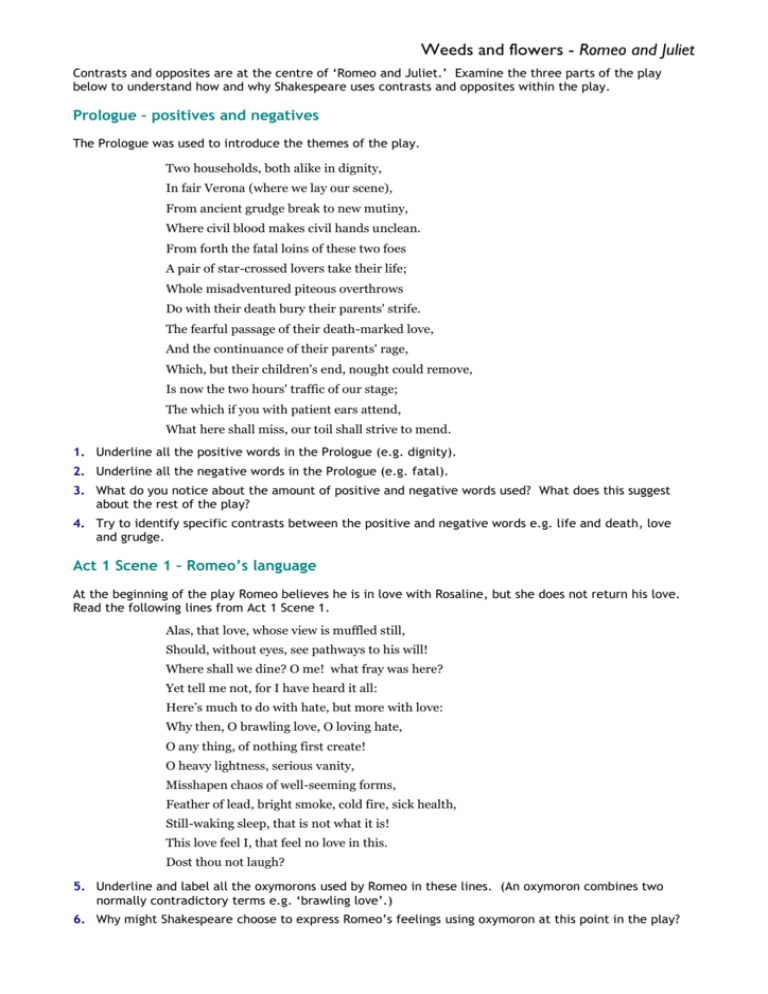
Weeds and flowers - Romeo and Juliet Contrasts and opposites are at the centre of ‘Romeo and Juliet.’ Examine the three parts of the play below to understand how and why Shakespeare uses contrasts and opposites within the play. Prologue – positives and negatives The Prologue was used to introduce the themes of the play. Two households, both alike in dignity, In fair Verona (where we lay our scene), From ancient grudge break to new mutiny, Where civil blood makes civil hands unclean. From forth the fatal loins of these two foes A pair of star-crossed lovers take their life; Whole misadventured piteous overthrows Do with their death bury their parents' strife. The fearful passage of their death-marked love, And the continuance of their parents' rage, Which, but their children's end, nought could remove, Is now the two hours' traffic of our stage; The which if you with patient ears attend, What here shall miss, our toil shall strive to mend. 1. Underline all the positive words in the Prologue (e.g. dignity). 2. Underline all the negative words in the Prologue (e.g. fatal). 3. What do you notice about the amount of positive and negative words used? What does this suggest about the rest of the play? 4. Try to identify specific contrasts between the positive and negative words e.g. life and death, love and grudge. Act 1 Scene 1 – Romeo’s language At the beginning of the play Romeo believes he is in love with Rosaline, but she does not return his love. Read the following lines from Act 1 Scene 1. Alas, that love, whose view is muffled still, Should, without eyes, see pathways to his will! Where shall we dine? O me! what fray was here? Yet tell me not, for I have heard it all: Here’s much to do with hate, but more with love: Why then, O brawling love, O loving hate, O any thing, of nothing first create! O heavy lightness, serious vanity, Misshapen chaos of well-seeming forms, Feather of lead, bright smoke, cold fire, sick health, Still-waking sleep, that is not what it is! This love feel I, that feel no love in this. Dost thou not laugh? 5. Underline and label all the oxymorons used by Romeo in these lines. (An oxymoron combines two normally contradictory terms e.g. ‘brawling love’.) 6. Why might Shakespeare choose to express Romeo’s feelings using oxymoron at this point in the play? Weeds and flowers - Romeo and Juliet Act 2 Scene 3 – Friar Lawrence’s language Friar Lawrence also uses the language of opposition. Read the following lines from Act 2 Scene 3. The grey-eyed morn smiles on the frowning night, Chequering the eastern clouds with streaks of light; And fleckled darkness like a drunkard reels From forth day’s path and Titan’s fiery wheels: Now, ere the sun advance his burning eye, The day to cheer, and night’s dank dew to dry, I must upfill this osier cage of ours With baleful weeds and precious-juiced flowers. The earth that’s nature’s mother is her tomb; What is her burying grave, that is her womb; And from her womb children of divers kind We sucking on her natural bosom find: Many for many virtues excellent, None but for some, and yet all different. O mickle is the powerful grace that lies In herbs, plants, stones, and their true qualities: For nought so vile, that on the earth doth live, But to the earth some special good doth give; Nor aught so good but, strain’d from that fair use, Revolts from true birth, stumbling on abuse. Virtue itself turns vice, being misapplied, And vice sometimes by action dignified. 7. Underline and label all the oppositions used by Friar Lawrence in these lines e.g. ‘smiles’ and ‘frowning’. 8. Why might Friar Lawrence be using the language of opposition? 9. Try to explain the link between the imagery he uses and events later in the play. Whole play 10. List as many contrasts and opposites you can think of in the play e.g. love and lust. 11. How is the use of contrasts and opposites within the play effective?

